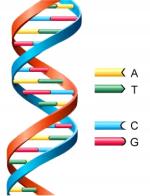|
This section contains 3,689 words (approx. 13 pages at 300 words per page) |

|
WHEN A CRIME is committed, something is always left at the scene of the crime, and something else is always carried away by the criminal. Those things are evidence. Fifty years ago, two scientists made a discovery that would give forensic specialists a powerful new tool to analyze that evidence. James Watson and Francis Crick, who worked together at Cambridge University in London, discovered the structure of the deoxyribonucleic (DNA) molecule. They did not realize it at the time, but their discovery that DNA is a double helix curled up inside the cell's nucleus would change the course of criminal investigation. Evidence from crimes would no longer be limited to things that could be seen, touched, or heard. DNA evidence, invisible to the naked eye, had the power to identify who had or had not been present at...
|
This section contains 3,689 words (approx. 13 pages at 300 words per page) |

|




